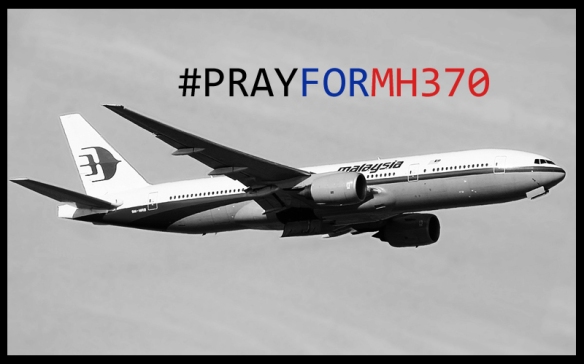Malaysia Airlines MH370: Search for missing plane to continue into 'foreseeable future' as operation expandedPHOTO: Acting Prime Minister Warren Truss says the search for flight MH370 will continue indefinitely.
The Australian-led search for missing Malaysian flight MH370 will continue indefinitely, Acting Prime Minister Warren Truss has said, as more resources are thrown at the operation.
Australian rescue officials have broadened the search area for the missing Malaysia Airlines plane and boosted the number of spotter planes scouring the Indian Ocean, with weather conditions favourable.
Speaking from Pearce Air Force base in Western Australia Mr Truss said authorities would continue searching for the foreseeable future.
"It is a very remote area, but we intend to continue the search until we are absolutely satisfied that further searching would be futile, and that day is not in sight," he said.
"We will continue the effort. We will continue to liaise with international allies in the search, although we're planning to continue it indefinitely.
"Although when nothing is discovered a further reappraisal will be made, but we're not even thinking about that at the present time."
The Australian Maritime Safety Authority (AMSA) is coordinating the hunt in the vast southern search corridor for the jet that vanished two weeks ago, focusing for a third day on an area of wild and remote sea almost 2,500 kilometres south-west of Perth.
"AMSA has tasked three RAAF P3 Orion aircraft, a New Zealand P3 Orion aircraft and two ultra-long-range commercial jets to search a 36,000 square kilometre area about 2,500 kilometres south-west of Perth today," it said in a statement.
Five planes criss-crossed 23,000 square kilometres of ocean yesterday without any sightings of wreckage.
AUDIO: Merchant ship helps with search for MH370 (AM)
Mr Truss said while the search "will cost money" it comes as part of Australia's responsibility as a global citizen.
"This potential disaster has come to our sector of the globe and we will undertake our responsibility to the people who are on board the aircraft and indeed the global community to make sure that this lead is investigated absolutely thoroughly," he said.
Chinese, Japanese planes to join search efforts
The commercial jets and four Orions have left Perth for the four-hour flight to the zone as they search for potential debris that showed up on satellite imagery six days ago.
The distance from Australia's west coast allows the Orions to search for about two hours, while the ultra-long-range aircraft can be in the zone for about five hours.
"This is a search that's primarily reliant on visual sight, and so the civilian aircraft are able to carry a number of people who are able to use the great technological asset called eyes to see across the search area," Mr Truss said.
Two planes from China and one from Japan are expected to join the multinational air-and-sea hunt over the next few days.
AMSA said two merchant ships were now in the area and Australian naval vessel HMAS Success, which is capable of picking up any wreckage, was due on the scene this afternoon.
With 153 out of 239 people on board the missing plane coming from China, Chinese authorities said at least seven Chinese ships were also steaming to the southern Indian Ocean, although it could be days before they arrive.
Two merchant ships are currently in the search zone, with a total of six having assisted with the search since a shipping broadcast was issued by AMSA on Monday evening.
Four marker buoys were dropped in the search area earlier this week and they continue to report water movement back to AMSA.
Despite better visibility and weather conditions yesterday, the search failed to find any sign of the missing airliner.
Mr Truss said the search has so far uncovered nothing but more resources will be deployed.
"There have been 15 sorties conducted from this base using mainly Australian Orion and New Zealand Orion aircraft, but there's also a US P8 Poseidon and a number of civilian aircraft who are involved in the search," he said.
Why the lag in cockpit technology?
In the age of smart phones and sophisticated satellite tracking, why is cockpit technology so far behind?
"While these aircraft are are equipped with very advanced technology, much of this search is actually visual, using the eyes of men and women to be able to look across the ocean and try and pick up any pieces of debris or parts that perhaps may be related to this aircraft's disappearance.
"Later today two Chinese aircraft will be arriving and we expect them to join the search tomorrow and then Japanese aircraft arriving also tomorrow, with the expectation that they will join the search perhaps on Monday or Tuesday.
"In addition there are a number of vessels now being despatched from around the world to join in the sea search."
AMSA spokesman John Young said the search is still considered a rescue operation.
"The plan is we want to find these objects because they are the best lead to where we might find people to be rescued," he said.
Several merchant ships have been helping with the search, including Norwegian cargo ship the St Petersberg, owned by Höegh Autoliners.
Höegh's Olav Sollie said they have not spotted any debris so far.
"The search so far has been done from the deck of the ship itself and that is natural also because the ship is 25 metres high, so from the top deck on the vessel you have a very good view and a long view," he told the ABC's AM program.
Pentagon considers request for undersea surveillance
The Pentagon, meanwhile, said it is considering a request from Malaysia's acting transport minister, Hishammuddin Hussein, to provide undersea surveillance equipment to help in the search.
Mr Hishammuddin made the request in a telephone call with US defence secretary Chuck Hagel, the Pentagon said in a statement.
Tracking flight MH370
From the ACARS to the plane's transponder, an aviation expert outlines the communication systems used to help track missing flight MH370.
Mr Hagel would "assess the availability and utility of military undersea technology for such a task and provide him an update in the very near future," the statement said.
The US Navy has a variety of active and passive sonar systems, some of which search the ocean for objects by emitting sound pings and monitoring the echoes that bounce back and others that listen for sound like an undersea microphone.
One system, called a "Towed Pinger Locator", is towed behind ships and is used to listen for downed Navy and commercial aircraft at depths of up to 6,000 metres, according to the US Navy's website.
Malaysian officials have been realistic about their ability to lead the operation with a global dynamic that some have said is beyond the country's technical capabilities and expertise.
Mr Hishammuddin said Malaysia welcomed "all assistance to continue to follow all credible leads", and that searchers were facing the "long haul" but were conscious that the clock was ticking.
The plane's black box voice and data recorder only transmits an electronic signal for about 30 days before its battery dies, after which it will be far more difficult to locate.
"If we do not find it within the 30 days, it brings in other issues of how to locate it - as the French airline (Air France flight 447) had to take two years. That comes into a different realm of search and rescue," Mr Hishammuddin said.
Mr Hishammuddin has rejected complaints that the country has botched search efforts or refused to share vital information with other governments.
Two people familiar with the investigation said the search had been slowed in some cases by delays over the paperwork needed to allow foreign maritime surveillance aircraft into territorial waters without a formal diplomatic request.
News From ABC














